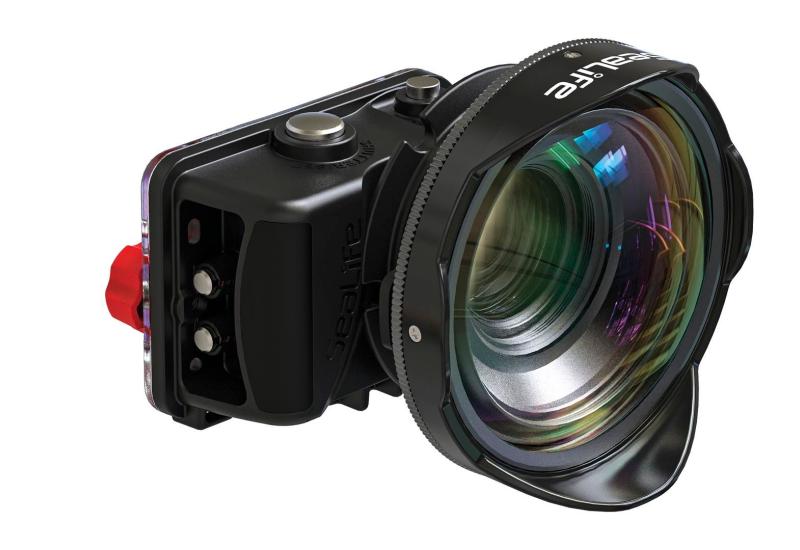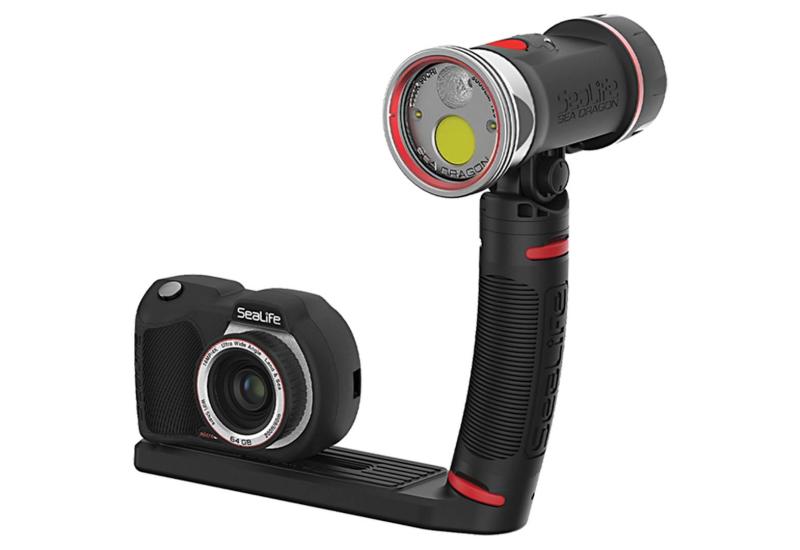Sea & Sea Canon DX-30/60 Underwater Housing
||
|---|
|  |
|
| Jim Watt with Sea & Sea's DX-30/60 in Bonaire.|
At the DEMA 2002 show in Las Vegas, Sea & Sea of Japan introduced a line of underwater housings for the new generation high-resolution digital SLR cameras from both Nikon and Canon. The new housings support the Nikon D100 and the Canon D60 and D30 digital cameras. Shortly after DEMA, Sea & Sea provided me with the Canon D60 version of the housing to test and review at the Bonaire Digital Shootout. I was able to put the housing to the test in an active week of digital diving.
The new housing named the DX-30/60 is a close cousin to Sea & Sea's popular NX-5 pro housing made for the Nikon F5. The most obvious difference is that the new housing is made of molded acrylic versus cast aluminum. All of Sea & Sea's new digital housings are made of this material. The housing is on the large side in comparison to the size of the camera. The quality and workmanship of the molding is superb. The housing has a total of 18 control buttons and knobs that access almost all of the D60's many advanced features. The port system for the many Canon lens options are the same ones used by Sea & Sea's NX series of housings. The housing comes standard with one Nikonos-style flash port and one extra port if another flash plug is needed later. It also comes with a remote accessory port that can be used for a shutter-activated focus light or remote camera control.
During the week in Bonaire, I shot more than 1,000 frames under water with the system. In the water, the housing balanced very well with both the super wide port and the macro ports. The size of the housing was a plus and it had the look and feel of an advanced professional system.The ability to look into the housing's acrylic back and check for water leaks was comforting. The control functions worked perfectly and I found the added control for focus lock to be of great benefit. The ability to use the auto focus and then lock in a focus area was a big plus. The viewfinder was not as large as you would like to find on advanced systems like the NX-5 but was adequate. In total, I found the housing to be an exciting new tool for the advanced digital shooter and I plan to have mine in the water on a regular basis.
|| |---|
| |
| Jim Watt with Sea & Sea's DX-30/60 in Bonaire.|
At the DEMA 2002 show in Las Vegas, Sea & Sea of Japan introduced a line of underwater housings for the new generation high-resolution digital SLR cameras from both Nikon and Canon. The new housings support the Nikon D100 and the Canon D60 and D30 digital cameras. Shortly after DEMA, Sea & Sea provided me with the Canon D60 version of the housing to test and review at the Bonaire Digital Shootout. I was able to put the housing to the test in an active week of digital diving.
|
| Jim Watt with Sea & Sea's DX-30/60 in Bonaire.|
At the DEMA 2002 show in Las Vegas, Sea & Sea of Japan introduced a line of underwater housings for the new generation high-resolution digital SLR cameras from both Nikon and Canon. The new housings support the Nikon D100 and the Canon D60 and D30 digital cameras. Shortly after DEMA, Sea & Sea provided me with the Canon D60 version of the housing to test and review at the Bonaire Digital Shootout. I was able to put the housing to the test in an active week of digital diving.
The new housing named the DX-30/60 is a close cousin to Sea & Sea's popular NX-5 pro housing made for the Nikon F5. The most obvious difference is that the new housing is made of molded acrylic versus cast aluminum. All of Sea & Sea's new digital housings are made of this material. The housing is on the large side in comparison to the size of the camera. The quality and workmanship of the molding is superb. The housing has a total of 18 control buttons and knobs that access almost all of the D60's many advanced features. The port system for the many Canon lens options are the same ones used by Sea & Sea's NX series of housings. The housing comes standard with one Nikonos-style flash port and one extra port if another flash plug is needed later. It also comes with a remote accessory port that can be used for a shutter-activated focus light or remote camera control.
During the week in Bonaire, I shot more than 1,000 frames under water with the system. In the water, the housing balanced very well with both the super wide port and the macro ports. The size of the housing was a plus and it had the look and feel of an advanced professional system.The ability to look into the housing's acrylic back and check for water leaks was comforting. The control functions worked perfectly and I found the added control for focus lock to be of great benefit. The ability to use the auto focus and then lock in a focus area was a big plus. The viewfinder was not as large as you would like to find on advanced systems like the NX-5 but was adequate. In total, I found the housing to be an exciting new tool for the advanced digital shooter and I plan to have mine in the water on a regular basis.










